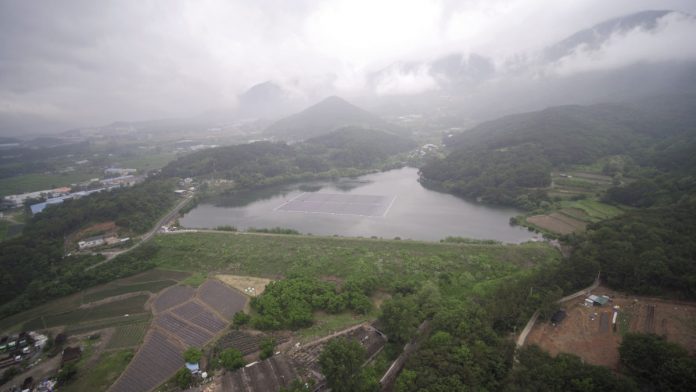The challenge of anchoring PV systems into the peninsula’s soft seabed is just one of many hurdles that Korea Electric Power Corp. will need to overcome as it develops the mammoth project in cooperation with companies such as Hanwha Q Cells and Hyundai Energy Solutions. But a recent investigation into an accident at a 13.7 MW floating project in Japan could help to show the way forward for Korea.
The Korean government announced the KRW 4.6 trillion ($3.7 billion) Saemangeum project last July. It will be built in two stages, with the first 1.2 GW phase set to come online in late 2022 and the remaining capacity by 2025. Seoul is now shortlisting investors for the project’s first phase, which may still be scaled back to just 300 MW, analysts say. But even if that happens, Saemangeum could still push Korea to the top of the global floating PV sector.
Molly Cox, a Wood Mackenzie researcher, says the multi-phase project “would be record-breaking” if it is completed. She notes that the project is on par with the world’s cumulative installed floating PV capacity of roughly 2.4 GW by late-2019.
Salt and wind
On the Yellow Sea, developers will need to consider challenges such as saltwater corrosion. Albert Park, head of communications for Hanwha Q Cells, notes that the Korea Energy Agency has already set guidelines to protect floating PV systems from saltwater and wind. “We expect to prevent problems arising from water,” Park explains. “They have rigid requirements for the approval of floating PV.”
The outlook for financing remains unclear. But Chris Beadles, senior analyst at IHS Markit, says an anticipated decline in wholesale power prices and renewable energy certificate (REC) prices could pose challenges.
“The REC price is already down 70% over the last three years and wholesale power prices are expected to fall, due to declining gas prices and future baseload capacity,” he explains, noting that the regional development agency and private companies will likely set up a special purpose company to finance the project.
Stakeholder engagement will also be a challenge, as with all offshore projects. The Saemangeum Seawall, completed in 2010, has always been environmentally controversial, and there is an ongoing campaign to nominate the western tidal flats as a UNESCO World Heritage site.
“Acceptance of residents is probably the most demanding challenge. There are many misunderstandings of floating PV, such as water pollution,” says Park, adding that overcoming this is “the most difficult challenge.”
Recent research
In September, Kyocera TCL Solar’s 13.7 MW floating array at the Yamakura Dam in Japan was destroyed by a typhoon. Japan’s Ministry of Economy, Trade and Industry (METI) drew several broad conclusions about the accident in an investigation that could prove useful for Korean developers. Among its findings, METI said floating PV plants must adhere to regional codes on wind load, as with all such structures, while noting the lack of a floating-specific structural code.
The main cause of the Yamakura accident was anchor failure, and the critical relationship between water levels and mooring line tension. These are points the developers will need to consider, in addition to the challenge of anchoring in the soft, muddy seabed of Korea’s west coast.
“In the offshore environment, factors such as module degradation, system performance and reliability, as well as capex and opex figures, will be crucial to understand,” adds Cox. “[We] will learn a lot from this project.”






